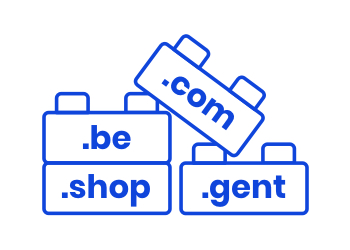The dangers of not adequately protecting your domain name

Needless to say, the image of your company is priceless. That is why it is important that no one can get hold of your brand name, make abusive use of it online and thereby tarnish your image.
Protect your brand name in the first place by registering a domain name for that name – even if you are not going to do anything with it right away. That way, no one else will be able to use it before you do.
But even if you have already registered domain names with your trademark (such as .com, .be and.nl domain names), it is best to ensure optimum protection for them as well. Because unfortunately there are quite a few dangers for your brand name on the Internet. You will find the most important ones in this article!
What is a domain name?
A domain name (or domain) is the address where you can be found online. For Combell, this is, for example, combell.com.
Read more about domain names: 'What is a domain name and how does it work?'
Online dangers for your brand name
If you manage your domain names poorly, your name will become a much easier target for cybercrime and abuse. And that, of course, will have an impact on your image, your customers and your portfolio. Below are three common forms of cybercrime (plus a little bonus!).
1. Cybersquatting
Cybersquatting is what people known as 'cybersquatters' do when they register a domain name that is important for your brand.
Imagine that you have a furniture shop called 'Furniture Franky'. You might have registered the domain names furniturefranky.be and furniturefranky.com, but what if someone uses your name with another extension, such as furniturefranky.nl, without your permission? Or if that person registers a domain name which is misleadingly similar to yours, such as furniture-franky.be?

When a cybersquatter has registered a domain name that contains your brand name or is similar to it, he can use it to his advantage. Your reputation reflects the trust of your customers. Meaning that when someone uses your name with evil intentions, your reputation can be severely damaged.
Suppose that you eventually decide to start a Dutch branch, and therefore acquire the domain name furniturefranky.nl. Cybersquatters will then use this opportunity to ask large amounts of money for this domain name.
And it gets even odder when that cybersquatter is actually a competitor of yours, or someone who wants to prevent you from developing your online presence.
In Belgium, cybersquatting is punishable by law, but you will of course save yourself a lot of trouble and money by preventing it from happening with an effective domain name strategy.
2. Phishing
Phishers pretend to be your company in fake e-mails in order to trick your customers or even your own employees into giving them money or handing over personal information.
In a phishing e-mail, a phisher asks to visit a certain website and make a payment or enter some information.
Your customers may fall into the trap of such a phishing e-mail because the fake website has a domain name that contains your brand name or is similar to it. The phisher thus uses your name to come across as legitimate to his victims.
This, of course, will seriously harm your company's reputation.
Read more:
3. The proliferation of domain names
A lack of streamlined management can also be problematic. When different people within a company register a domain name, that company's domain portfolio can become somewhat cluttered, especially if the domain names are registered through different registrars (domain name providers).
Imagine, for instance, that Patrick, your colleague from marketing, wants to register a domain name with registrar A. And that Peter, your colleague from IT, wants to register a domain name with registrar B.
The management of these domain names will then be in the hands of different internal employees and different providers. This will inevitably lead to a confusing mess.
If, on top of that, one of the aforementioned colleagues leaves the company, the risk of losing data related to a domain name is very high. This causes problems in the management of the domain name portfolio.
One more problem: Counterfeiting & Piracy
Counterfeiting and piracy do not so much concern your domain name, but we mention them here anyway, because you can also protect your brand name against them, thereby complementing the protection of domains.
Counterfeiting involves rogue businesses offering counterfeit goods on e-commerce platforms, creating untrustworthy apps with your company name or distributing copyrighted content in your name. Piracy, on the other hand, involves offering genuine but illegally obtained goods that you have created (e.g. films, music or e-books).
Counterfeiting and piracy can severely damage your reputation. With a good domain name strategy, you will prevent criminals from getting away with their crimes. Because those who grew up with VHS cassettes know it all too well: 'Piracy. It's a crime.'
Consolidation and central management thanks to our online brand protection service
Highlighting the importance of security is not a luxury, because if your domain name portfolio is a mess, the chances of abuse or vulnerability increase dramatically.
That is why we cannot stress enough the importance of good domain name management. At Combell, we can help you with this thanks to our online brand protection: a broad spectrum of options to protect your domain portfolio, with personal advice on what the best services are for you.
Different options for brand protection
The protection that Combell offers for your brand comes in several forms.
Of course, most of our online brand protection measures are aimed at securing your current domain names and preventing trademark infringement. But if someone infringes your rights as a registrant or trademark holder anyway, you can be sure that Combell will also take appropriate action.


